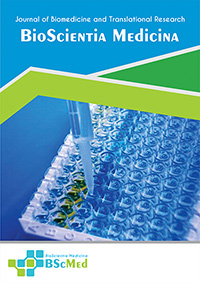Main Article Content
Abstract
Background: Vitiligo is a complex autoimmune depigmenting disorder driven by melanocyte-specific CD8+ T cells, oxidative stress, and genetic susceptibility. The lack of standardized, accessible animal models that recapitulate these pathways hinders therapeutic development. This study aimed to systematically optimize and validate a chemically-induced vitiligo model in C57BL/6 mice.
Methods: Eighty (80) male C57BL/6 mice were randomized into ten groups (n=8/group). Experimental groups received once-daily topical applications of hydroquinone (HQ) at 2.5%, 5%, or 10%, or monobenzone (MBZ) at 40% for 8 or 16 days. Vehicle-treated mice served as controls. Efficacy was assessed via quantitative histopathology (Masson-Fontana staining for melanin area), biomolecular assays for oxidative stress (Malondialdehyde [MDA] and Superoxide Dismutase [SOD]), and RT-qPCR for melanogenesis-related (Tyr) and inflammation-related (Tnf) gene expression.
Results: A clear dose- and time-dependent depigmentation was observed. The 10% HQ 16-day protocol was maximally effective, inducing a profound reduction in epidermal melanin area (0.06 ± 0.02) compared to 16-day controls (0.40 ± 0.04; p < 0.001). This histopathological finding was significantly correlated with severe cutaneous oxidative stress, evidenced by a 3.75-fold increase in MDA (p < 0.001) and a 50% reduction in SOD activity (p < 0.001) versus controls. Furthermore, this regimen caused a potent suppression of Tyr expression (0.15-fold change; p < 0.001) and a significant upregulation of the pro-inflammatory cytokine Tnf (3.8-fold change; p < 0.001).
Conclusion: The 16-day topical application of 10% hydroquinone is a reliable, rapid, and highly reproducible protocol for inducing vitiligo-like depigmentation in C57BL/6 mice. This model successfully recapitulates key pathophysiological pillars of human vitiligo, including melanocytotoxicity, profound oxidative stress, and a pro-inflammatory cutaneous environment, establishing it as a valuable platform for preclinical therapeutic screening.
Keywords
Article Details
As our aim is to disseminate original research article, hence the publishing right is a necessary one. The publishing right is needed in order to reach the agreement between the author and publisher. As the journal is fully open access, the authors will sign an exclusive license agreement.
The authors have the right to:
- Share their article in the same ways permitted to third parties under the relevant user license.
- Retain copyright, patent, trademark and other intellectual property rights including research data.
- Proper attribution and credit for the published work.
For the open access article, the publisher is granted to the following right.
- The non-exclusive right to publish the article and grant right to others.
- For the published article, the publisher applied for the Creative Commons Attribution-NonCommercial-ShareAlike 4.0 International License.





